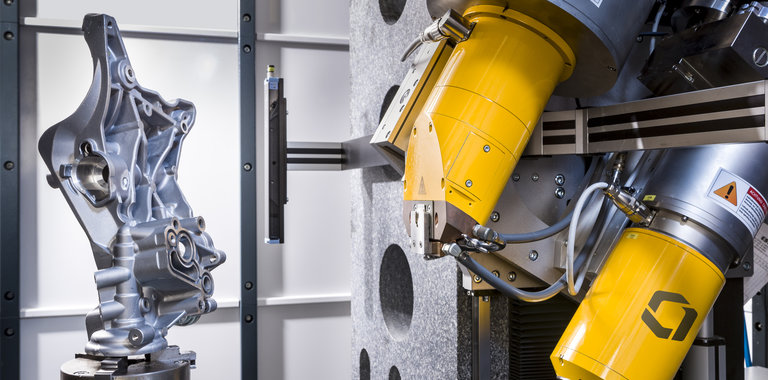
What is automatic film processing?
NDT-U (universal) film processor:
Over the last few years there has been a vast increase in the use of automatic processors for
handling industrial X-ray films. Not only is it a faster and more efficient process, the
uniform process also leads to improved image quality. The total processing time may be
between 1.5 and 12 minutes (nominally 8 minutes), significantly shorter than in manual
processing. Of these 8 minutes, the film will be in the developer solution for only 100
seconds, the so-called “immersion time”. These shorter processing times have been made
possible by the use of special chemicals (G135 and G335), and by a higher temperature of
the solutions: 28°C instead of 20°C.
The shortest processing time of 1.5 minute is essential for the development of the special
films used on board lay-barges, where the results must be available quickly.
The chemicals used are more active at higher temperatures. The higher temperature of the
solutions makes the emulsion layers swell, resulting in a faster diffusion of the liquid
through the layers and, consequently, more rapid action of the chemicals.
Swollen emulsion coatings do, however, have the disadvantage of being softer and hence
more vulnerable to damage; a compromise between the advantages and drawbacks is rea-
ched by adding a carefully determined proportion of hardening ingredients to the fixer.
Chemicals for use in automatic processors also have additives to inhibit oxidation of the
solutions and formation of fog in the emulsions.
Automatic film processing not only makes the results available sooner, it also standardises (improved reproducibility/uniformity) the development process and, consequently, the exposure technique. This increases the quality and reliability of radiography as a method of non-destructive testing.
GE Inspection Technologies supplies integrated Agfa-systems in which X-ray films, chemi- cals and processing equipment are all adapted to each other. Through the uniform charac- teristics of its films, carefully formulated chemicals, continuous agitation, automatic reple- nishment and accurate temperature control of the solutions in the processors, Agfa systems ensure top-quality results.
The Agfa NDT-U processor is equipped with an infrared film drier while its functions are controlled by a microprocessor. Its throughput depends on the required cycle time (adjus- table between 1.5 and 12 minutes) and film size. All normal film sizes, including roll film, can be processed. When set for an 8-minute cycle (100 seconds immersion time) for exam- ple, approximately 100 films of size 10 x 48 cm can be processed per hour.
NDT-E (economy) film processor: In order to limit any detrimental effects on the environment, Agfa has developed the “Eco” (Ecology and economy) designated processors. Here, too, equipment and chemicals are carefully matched, thus complying with strict ecological requirements such as a maximum of 50 mg silver per square metre of processed film, for the disposal of rinse water. This figure for silver content is at least fifteen times lower than for conventional developing systems. This is achieved through the considerably improved (cascade) fixing process, which additionally results in a bigger quantity of recovered silver.
Furthermore, measures have been taken to save on energy, chemical and water usage, the- reby making the “eco” range of film processors as environmentally friendly as possible. Figure1-10 shows the schematic lay-out of this high-tech processor.
The “S eco”-version has a 50 % higher production capacity than the U-version. A very useful option is its suitability for use in daylight, in combination with a matching film feeding system.
Imag


